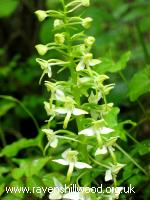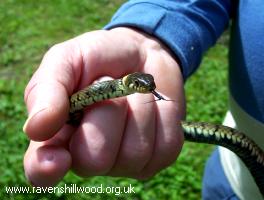WE ARE CURRENTLY CLOSED TO ALL VISITORS.
THERE IS NO ACCESS TO THE RESERVE, CAR PARK OR ANY OF OUR FACILITIES
Warden lead guided walks are available, bookable in advance. contact us for more details
In April and May there is a surge of fragrant woodland flowers before the leaf canopy closes over. Thereafter, most of the wild flowers are to be seen beside the paths. The flora of Ravenshill includes Herb Paris, early Purple and Common Spotted Orchid and Broad-leaved Helleborine.

Amongst the more common flowers to be found are – Enchanter’s Nightshade, Common Centuray, Lady’s Bedstraw, Bluebell, Primrose and Common Dog Violet. Numerous species of liverworts, mosses and ferns create carpets of rich colour.

Autumn brings “fungi heaven” displaying species from those barely visible to the naked eye, to parasols as large as dinner plates: look for tree fungi or bracket on silver birch trunks. The winter landscape is delicately decorated with vibrant crimson spindle.
Download a plant list produced in 1984 by Elizabeth Barling…part1 and part2
Woodlands are crucial to wildlife throughout the year. Resident birds like Buzzard, Sparrowhawk, Tawny Owl, Woodpeckers, Thrushes and Tits are joined each spring by migrant warblers.
Winter visitors include Siskin and sometimes Crossbill.
The rich variety of habitat here supports many different species. Emperor, Southern Hawker and Common Darter dragonflies can be seen in good numbers, especially around the pool. Butterflies are represented, amongst others, by White Admiral, Orange Tip, Small Tortoiseshell and Peacock. Squirrel and rabbit abound but the more discerning observer has an opportunity to see Roe Deer, Fox or Stoat. This environment is ideal for Grass Snake, Slow Worm, Toads and Frogs

.
Our knowledge of Ravenshill’s flora and fauna is increasing all the time. Your observations are very important to us. When you visit the Reserve please share your sightings with us by using the visitors book provided in the Discovery Centre. It will pay you to stand still sometimes, using all of your senses to see, hear or even smell the wildlife ~
Mother Nature is at work.
Toads
Toads that hibernate in the wood will start moving to their breeding pools from the end of Feb. We will be helping them cross the road.
